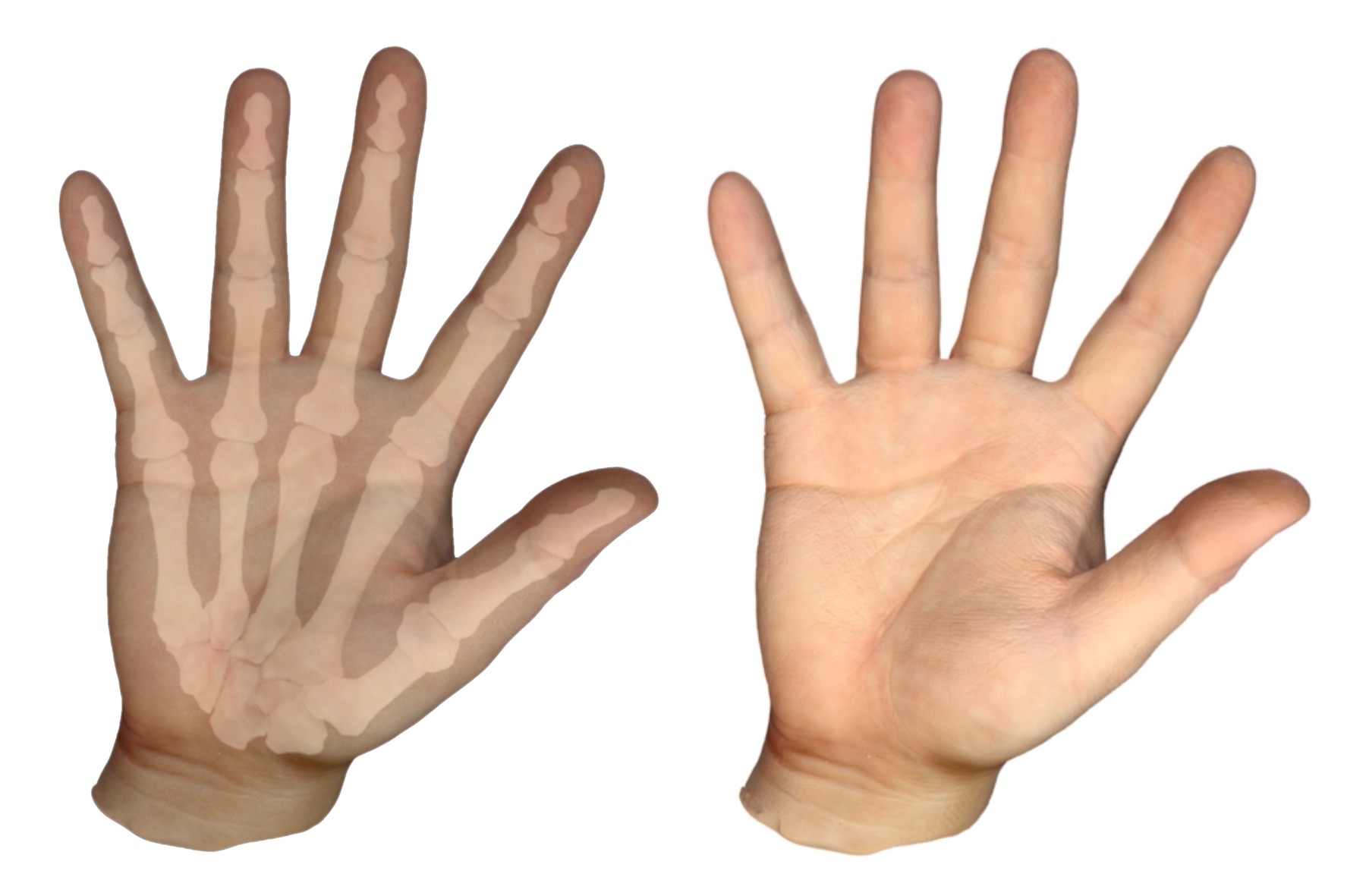 Hand Modeling and Simulation Using Stabilized Magnetic Resonance Imaging
Hand Modeling and Simulation Using Stabilized Magnetic Resonance Imaging
ACM SIGGRAPH 2019

People
- Bohan Wang
University of Southern California - George Matcuk
University of Southern California - Jernej Barbič
University of Southern California
Project material
- Paper (PDF, 49 MB)
- Video (Quicktime MP4, 387 MB)
- Short video (Quicktime MP4, 105 MB)
- Presentation (PPTX, 336 MB)
- Optimized joint positions and orientations: female and male.
- MRI dataset
Citation
-
Bohan Wang, George Matcuk, Jernej Barbič:
Hand Modeling and Simulation Using Stabilized Magnetic Resonance Imaging, ACM Transactions on Graphics 38(4) (SIGGRAPH 2019), Aug 2019. BIBTEX
Abstract
We demonstrate how to acquire complete human hand bone anatomy (meshes) in multiple poses using magnetic resonance imaging (MRI). Such acquisition was previously difficult because MRI scans must be long for high-precision results (over 10 minutes) and because humans cannot hold the hand perfectly still in non-trivial and badly supported poses. We invent a manufacturing process whereby we use lifecasting materials commonly employed in film special effects industry to generate hand molds, personalized to the subject, and to each pose. These molds are both ergonomic and encasing, and they stabilize the hand during scanning. We also demonstrate how to efficiently segment the MRI scans into individual bone meshes in all poses, and how to correspond each bone's mesh to same mesh connectivity across all poses. Next, we interpolate and extrapolate the MRI-acquired bone meshes to the entire range of motion of the hand, producing an accurate data-driven animation-ready rig for bone meshes. We also demonstrate how to acquire not just bone geometry (using MRI) in each pose, but also a matching highly accurate surface geometry (using optical scanners) in each pose, modeling skin pores and wrinkles. We also give a soft tissue Finite Element Method simulation "rig", consisting of novel tet meshing for stability at the joints, spatially varying geometric and material detail, and quality constraints to the acquired skeleton kinematic rig. Given an animation sequence of hand joint angles, our FEM soft tissue rig produces quality hand surface shapes in arbitrary poses in the hand range of motion. Our results qualitatively reproduce important features seen in the photographs of the subject's hand, such as similar overall organic shape and fold formation.
Comments, questions to Jernej Barbič.Related projects
- Simulation of Hand Anatomy Using Medical Imaging
- Modeling of Personalized Anatomy using Plastic Strains
Acknowledgments
- NSF (IIS-1911224)
- USC Annerberg Graduate Fellowship to Bohan Wang
- Bosch Research
- Adobe Research
Disclaimer
Any opinions, findings, and conclusions or recommendations expressed in this material are those of the authors and do not necessarily reflect the views of the National Science Foundation.
Copyright notice
The documents contained in these directories are included by the contributing authors as a means to ensure timely dissemination of scholarly and technical work on a non-commercial basis. Copyright and all rights therein are maintained by the authors or by other copyright holders, notwithstanding that they have offered their works here electronically. It is understood that all persons copying this information will adhere to the terms and constraints invoked by each author's copyright. These works may not be reposted without the explicit permission of the copyright holder.
Unique accesses: